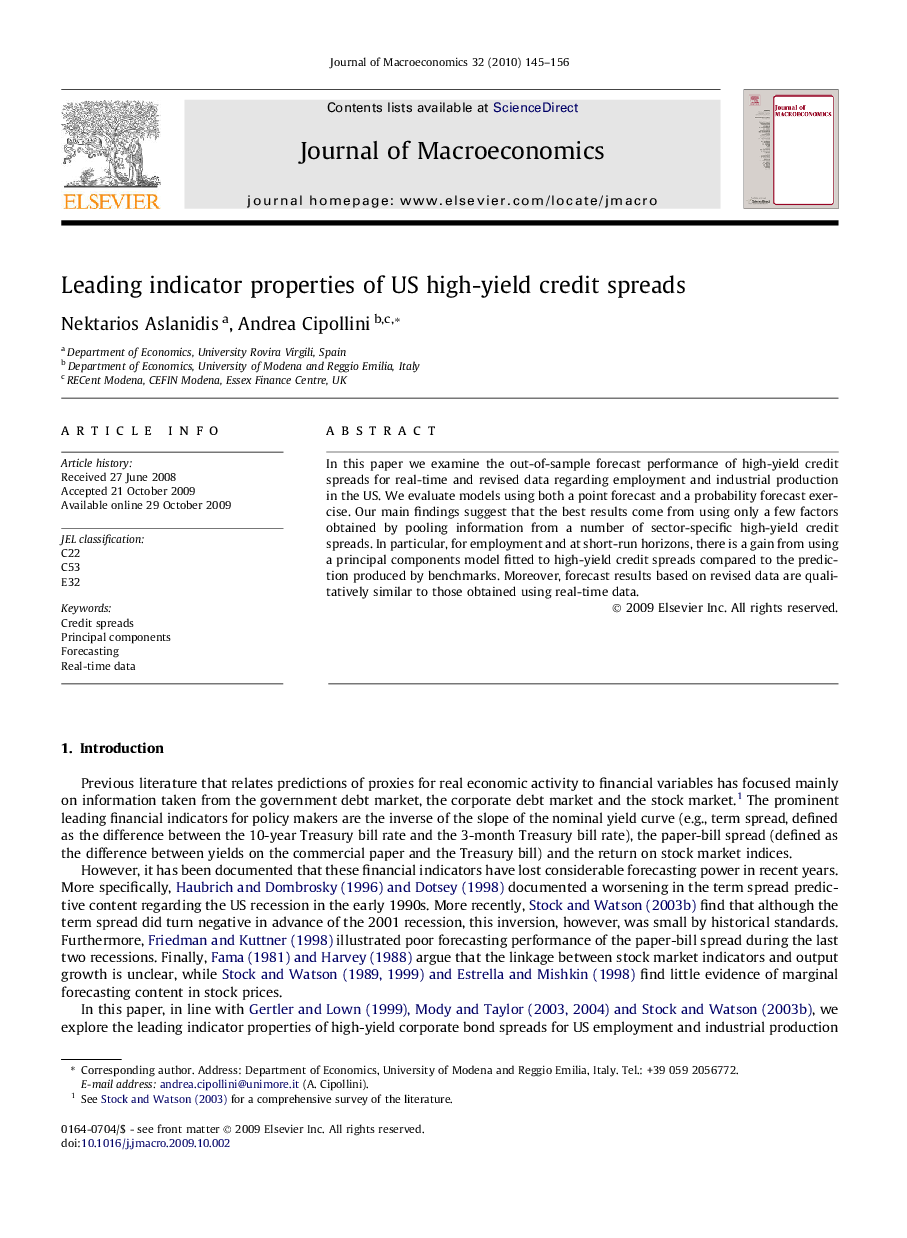| Article ID | Journal | Published Year | Pages | File Type |
|---|---|---|---|---|
| 966019 | Journal of Macroeconomics | 2010 | 12 Pages |
Abstract
In this paper we examine the out-of-sample forecast performance of high-yield credit spreads for real-time and revised data regarding employment and industrial production in the US. We evaluate models using both a point forecast and a probability forecast exercise. Our main findings suggest that the best results come from using only a few factors obtained by pooling information from a number of sector-specific high-yield credit spreads. In particular, for employment and at short-run horizons, there is a gain from using a principal components model fitted to high-yield credit spreads compared to the prediction produced by benchmarks. Moreover, forecast results based on revised data are qualitatively similar to those obtained using real-time data.
Related Topics
Social Sciences and Humanities
Economics, Econometrics and Finance
Economics and Econometrics
Authors
Nektarios Aslanidis, Andrea Cipollini,
